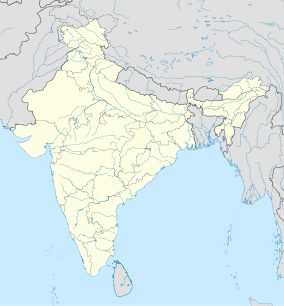The Dibang Wildlife Sanctuary is one of the eight wildlife sanctuaries of Arunachal Pradesh, India.
| Dibang Wildlife, India | |
|---|---|
 Official logo of Dibang Wildlife Sanctuary | |
Map of Arunachal Pradesh | |
| Location | Arunachal Pradesh, India |
| Coordinates | 29°02′49″N 95°47′24″E / 29.047°N 95.79°E[1] |
| Area | 4,149 km2 (1,602 sq mi) |
| Established | 1992 |
| Governing body | Department of Environment and Forest of Arunachal Pradesh |
| web | |
Location
editIt is located in the Upper Dibang Valley district covering an area of 4,149 km2 (1,602 sq mi). The sanctuary is rich in wildlife. Rare mammals such as Mishmi takin, red goral, musk deer (at least two species), red panda, Asiatic black bear, occasional tiger and Gongshan muntjac occur while among birds there are the rare Sclater's monal and Blyth's tragopan.[2]
Flora and fauna
editA new species of a flying squirrel, has been recently discovered from the edge of this sanctuary. It has been named the Mishmi Hills giant flying squirrel (Petaurista mishmiensis).[3] Dibang Wildlife Sanctuary is located fully or partly within Dihang-Dibang Biosphere Reserve
It is protected by the Department of Environment and Forest of Arunachal Pradesh.
References
edit- ^ "Dibang Sanctuary". protectedplanet.net. Archived from the original on 18 September 2014. Retrieved 5 November 2012.
- ^ Choudhury, Anwaruddin (2008) Survey of mammals and birds in Dihang-Dibang biosphere reserve, Arunachal Pradesh. Final report to Ministry of Environment & Forests, Government of India. The Rhino Foundation for Nature in NE India, Guwahati, India. 70 pp.
- ^ Choudhury, Anwaruddin (2009). One more new flying squirrel of the genus Petaurista Link, 1795 from Arunachal Pradesh in north-east India. The Newsletter and Journal of the Rhino Foundation for Nature in NE India 8: 26-34, plates.
External links
edit

